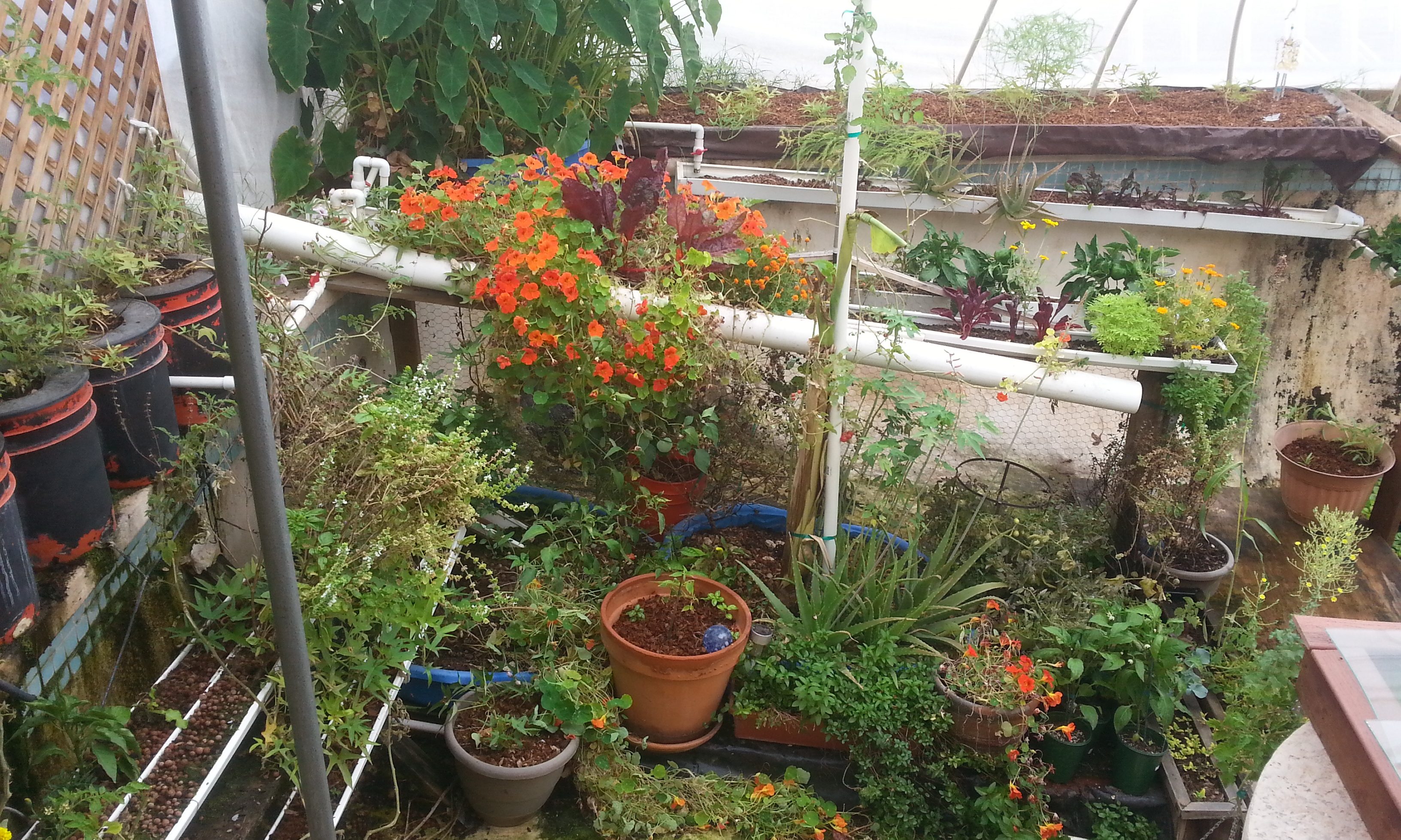Dear Umbra,
In your reply to the question about pollution and rooftop gardening, you talked a fair amount about lead pollution. Since gasoline is no longer leaded, and since it’s container gardening that wouldn’t have any lead paint in it, and surely nobody has lead water pipes anymore, why is lead even a concern?
Teresa
Brenham, Tex.
Dearest Teresa,
Our ecological history hangs around our necks like a lead weight.
I apologize for the lack of clarity on the rooftop gardening issue, and would like to offer additional information useful to all gardeners. You are right that lead in store-bought container gardening soil is not considered a concern. Airborne heavy metals are the main concern for rooftop container gardeners. These airborne particles may or may not include residual lead dust from the days of leaded gasoline and lead paint, as well as lead (and other heavy metals, like arsenic and cadmium) associated with our current industrial life. Lead is still used in, among other things, the manufacture of batteries and some plastics — and the federal government is still grappling with how to set airborne lead standards.
Leaded gasoline was prevalent in the United States from the early 1920s until the mid-1970s, when its phase-out began. I always thought the lead phase-out story was one of a society suddenly awakening to the dangers of lead. Ha. The folks who developed the lead gas additive knew it was harmful, the government knew it made people sick, and in a duet of commercialism and pro-business collaboration, leaded fuel stayed on the market as a solution for engine knock for over 50 years. The lead paint story is similar, except that lead in paint was touted not as a solution for engine knock, but as an additive that improves paint performance.
Though these leaded items are almost completely off the market in the United States — not completely, just almost completely — lead poisoning is still a major issue in this country, especially for children. Lead paint is the largest source of lead poisoning. Just to complete the roundup, lead water pipes do still exist, and the solder in new pipes often contains lead. The EPA estimates that 10 to 20 percent of young children’s lead exposure is from drinking water.
So what does all this have to do with our soil? Fortunately, the banning of household lead paint and leaded automobile gasoline has had a huge impact on public health, and lead poisonings are greatly reduced. But any house paint applied before 1978 must be assumed to contain lead. We can consume this lead as the paint flakes, turns to dust, blows into the air, or washes down the wall in a rain. We breathe (or eat, if we are children) the dust, and/or eventually the dust winds up in the soil. Some soils are also contaminated by the lead gasoline additive. We must be cautious when renovating our homes, kissing the Earth when we get home from trips, and, to a lesser extent, gardening.
Container gardening is a great way to garden in the face of lead-contaminated soils. If you have ground space, test your soil, through the UMass service if you like. If the test results indicate high lead (results will include interpretation of the mysterious numbers), then your path is clear: set up containers in your yard. If it’s an urban yard, with lots of cars and trucks blowing dust and exhaust about, try to follow the recommendations mentioned in the previous column: Put the vegetable garden away from the street, add a fence or hedge barrier between the garden and the cars, and carefully wash your bounty.
Another note about lead-defensive gardening on the ground: If you garden correctly and your plants are healthy, they will have long roots. The roots may grow down below your containers and into the contaminated soil — three feet or more of root depth would not be uncommon on a vigorous root vegetable. So you will need deep containers.
I know this all may seem like bad news, but lead uptake through garden food is much less of a concern than uptake directly through eating or inhaling flaky paint or lead-imbued soil. Just use common sense, test your soil, and don’t let your kids eat lead-infested dirt.
Heavily,
Umbra


